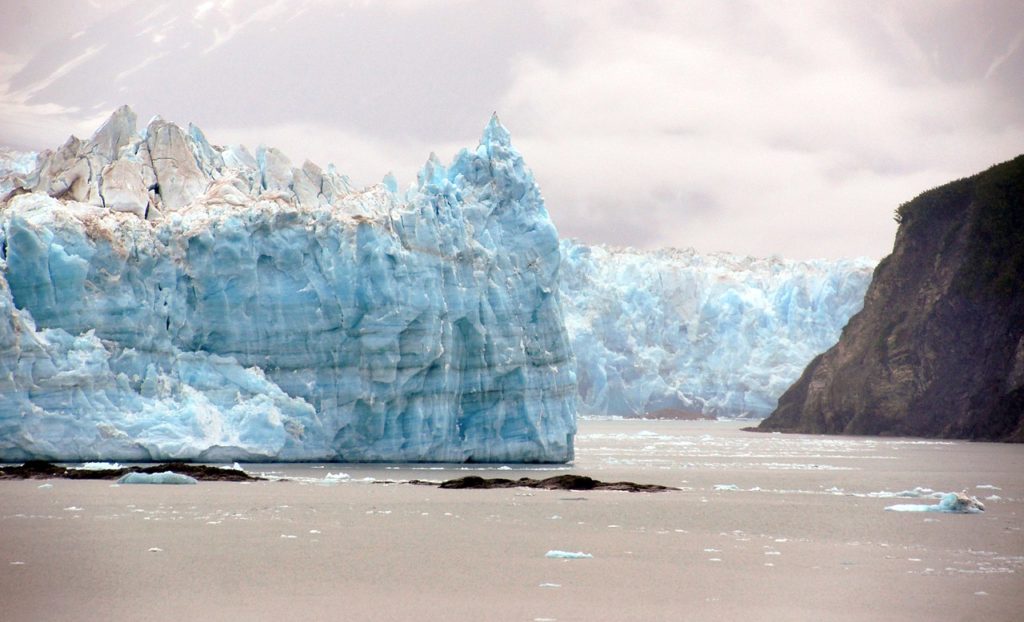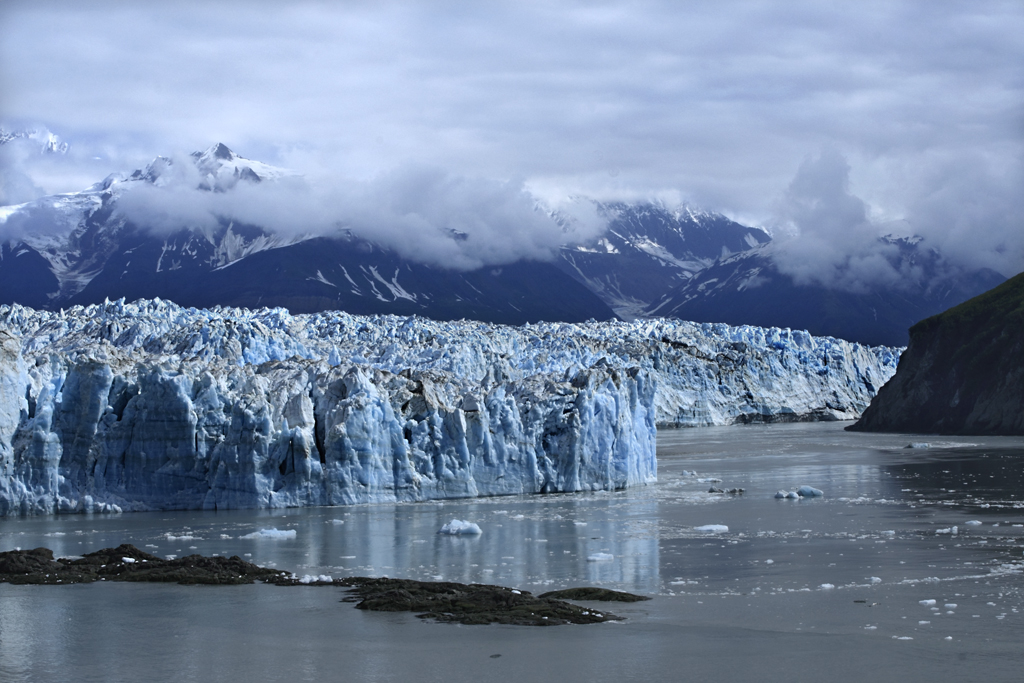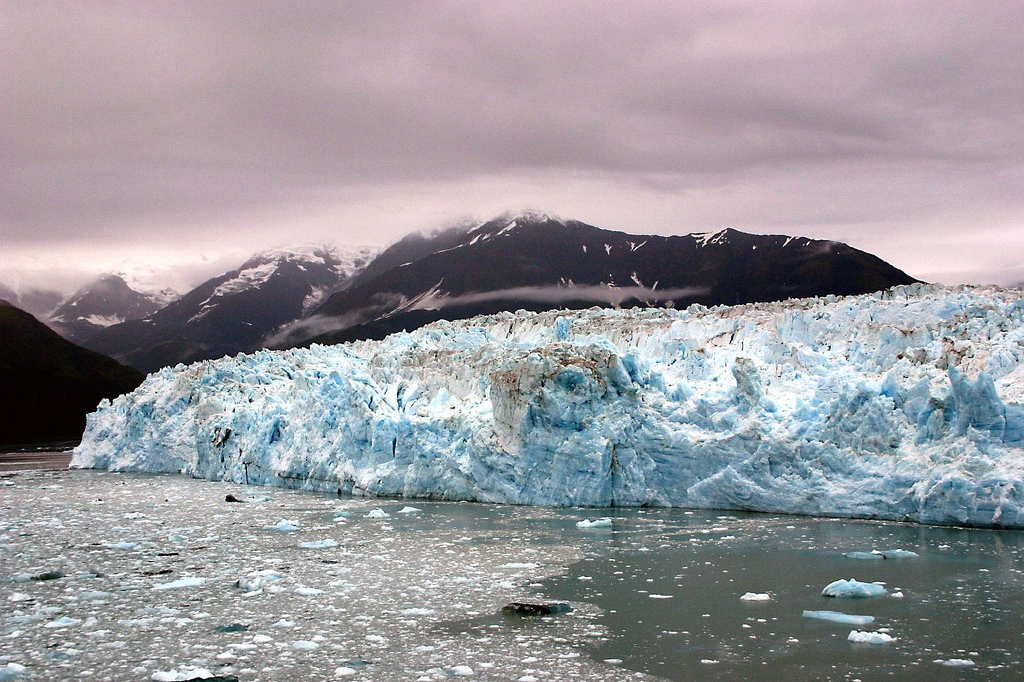Hubbard Glacier is a glacier located in Wrangell–St. Elias National Park and Preserve in eastern Alaska and Kluane National Park and Reserve in Yukon, Canada, and named after Gardiner Hubbard.
Hubbard Glacier measures 122 km long and plunges 360 meters into the depths of the bay. Its immense beauty and phenomenal blue hues are enchanting, even from afar.

A shorter tributary glacier begins at the easternmost summit on the Mount Logan ridge at about 5,600 m. Before it reaches the sea, Hubbard is joined by the Valerie Glacier to the west, which, through forward surges of its own ice, has contributed to the advance of the ice flow that experts believe will eventually dam the Russell Fjord from Disenchantment Bay waters.

The Hubbard Glacier ice margin has continued to advance for about a century. In May 1986, the Hubbard Glacier surged forward, blocking the outlet of Russell Fjord and creating “Russell Lake”. All that summer, the new lake was filled with runoff; its water level rose 25 meters and the decrease in salinity threatened its sea life.

It takes about 400 years for ice to traverse the length of the glacier, meaning that the ice at the foot of the glacier is about 400 years old. The glacier routinely calves off icebergs the size of a ten-story building. Where the glacier meets the bay, most of the ice is below the waterline, and newly calved icebergs can shoot up quite dramatically, so ships must keep their distance from the edge of the glacier in Disenchantment Bay.

A cruise-by by Hubbard Glacier offers the perfect opportunity to slow down, forget the outside world, and immerse yourself in the beauty of Alaska’s unspoiled scenery. The only way to see Hubbard Glacier is by ship and even then only a handful of vessels are permitted access each year. Many who venture here have never seen a glacier. Those that fail to visit most likely never will. Yet to be among the few to have experienced Hubbard Glacier affords you more than bragging rights.
According to the Internet














